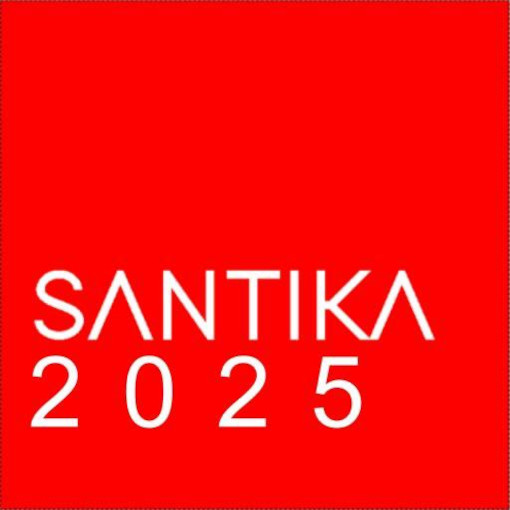PREDIKSI KEKUATAN GEMPA BUMI INDONESIA BERDASARKAN NILAI MAGNITUDO MENGGUNAKAN NEURAL NETWORK
DOI:
https://doi.org/10.33005/santika.v2i0.124Keywords:
gempa bumi, magnitudo, neural network, algoritma genetikaAbstract
Pada artikel ini diusulkan sebuah model untuk memprediksi kekuatan nilai magnitude gema bumi di Indonesia. Model yang dusulkan adalah metode neural network yang sebelumnya telah dioptimasi nilai parameter yang digunakannya dengan mengggunakan algoritma genetika sehingga tingkat error yang dihasilkan lebih kecil dan lebih baik. Berdasarkan hasil ekperimen didapatkan nilai root mean square error (RMSE) dari model neural network yang diusulkan adalah sebesar 0,718. Upaya peningkatan akurasi setelah dioptimasi dengan menggunakan algoritma genetika (GA) didapatkan hasil nilai RMSE sebesar 0,708. Berdasarkan hasil yang telah didapatkan maka terjadi peningkatan akurasi dengan dibuktikan adanya penurusan nilai RMSE yang teah didapatkan. Model yang diusulkan merupakan model terbaik yang dapat digunakan untuk memprediksi kekuatan nilai magnitudo gempa bumi denagn tingkat akurasi yang lebih baik dan nilai error yang lebih kecil.
References
[2] T. Tupan, N. R. Widuri, and R. Rachmawati, “ANALISIS BIBLIOMETRIK PUBLIKASI ILMIAH TENTANG PREDIKSI GEMPA BUMI BERBASIS DATA SCOPUS PERIODE 2015-2020,” Libr. J. Perpust., vol. 8, no. 1, 2020.
[3] Z.-H. Jiao and X. Shan, “Statistical framework for the evaluation of earthquake forecasting: A case study based on satellite surface temperature anomalies,” J. Asian Earth Sci., vol. 211, p. 104710, May 2021, doi: 10.1016/j.jseaes.2021.104710.
[4] S. Ma, C. Xu, and X. Shao, “Spatial prediction strategy for landslides triggered by large earthquakes oriented to emergency response, mid-term resettlement and later reconstruction,” Int. J. Disaster Risk Reduct., vol. 43, p. 101362, Feb. 2020, doi: 10.1016/j.ijdrr.2019.101362.
[5] S. Pasari, Y. Sharma, and Neha, “Quantifying the current state of earthquake hazards in Nepal,” Appl. Comput. Geosci., vol. 10, p. 100058, Jun. 2021, doi: 10.1016/j.acags.2021.100058.
[6] S. Rohadi, “APLIKASI WAVELET STASIONER DALAM PREDIKSI AKTIVITAS STRAIN ENERGY RELEASE GEMPABUMI DI ZONA SUBDUKSI JAWA,” J. Meteorol. dan Geofis., vol. 9, no. 1, May 2014, doi: 10.31172/jmg.v9i1.20.
[7] W. Setyonegoro and N. AZ, “PROTOTIPE MODEL PREDIKSI PERIODE ULANG KEJADIAN GEMPA BUMI DENGAN IDENTIFIKASI PENGENALAN POLARITAS MEKANISME SUMBER GEMPA BUMI MELALUI KLASIFIKASI BOLA FOCAL MENGGUNAKAN TEKNIK ANFIS DAN PCA,” Telemat. MKOM, vol. 7, no. 1, pp. 57–71, Jun. 2016, Accessed: Aug. 06, 2021. [Online]. Available: https://journal.budiluhur.ac.id/index.php/telematika/article/view/130.
[8] A. Wibowo, A. Insani, and B. Nurdiyanto S., “Modifikasi Pattern Informatics untuk Prediksi Hotspot Aktivitas Seismik pada Gempa di Pulau Jawa,” J. Nas. Tek. Elektro dan Teknol. Inf., vol. 6, no. 2, Jun. 2017, doi: 10.22146/jnteti.v6i2.305.
[9] D. Maulana and R. Rahmanto, “PENERAPAN DATA MINING UNTUK MENGANALISIS DATA BENCANA GEMPA BUMI DI KEPULAUAN MALUKU PADA BMKG MENGGUNAKAN NAÏVE BAYES ALGORITHM,” SIGMA - J. Teknol. Pelita Bangsa, vol. 10, no. 3, 2020.
[10] D. P. Utomo and B. Purba, “Penerapan Datamining pada Data Gempa Bumi Terhadap Potensi Tsunami di Indonesia,” Pros. Semin. Nas. Ris. Inf. Sci., vol. 1, p. 846, Sep. 2019, doi: 10.30645/senaris.v1i0.91.
[11] L. Irawan, L. H. Hasibuan, and F. Fauzi, “ANALISA PREDIKSI EFEK KERUSAKAN GEMPA DARI MAGNITUDO (SKALA RICHTER) DENGAN METODE ALGORITMA ID3 MENGGUNAKAN APLIKASI DATA MINING ORANGE,” J. Teknol. Inf. J. Keilmuan dan Apl. Bid. Tek. Inform., vol. 14, no. 2, pp. 189–201, Aug. 2020, doi: 10.47111/jti.v14i2.1079.
[12] W. Agwil, “PENERAPAN JARINGAN SARAF TIRUAN PADA DATA GEMPA BUMI DI PROVINSI BENGKULU,” J. Stat. Univ. Muhammadiyah Semarang, vol. 8, no. 2, p. 152, Nov. 2020, doi: 10.26714/jsunimus.8.2.2020.152-158.
[13] F. Firdausa, “Prediksi dan Analisis Data Gempa Bumi di Provinsi Bengkulu dengan Metode Artificial Neural Network,” CANTILEVER, vol. 8, no. 2, pp. 45–49, Jan. 2020, doi: 10.35139/cantilever.v8i2.5.
[14] A. S. N. Alarifi, N. S. N. Alarifi, and S. Al-Humidan, “Earthquakes magnitude predication using artificial neural network in northern Red Sea area,” J. King Saud Univ. - Sci., vol. 24, no. 4, pp. 301–313, Oct. 2012, doi: 10.1016/j.jksus.2011.05.002.
[15] S. Sri Lakshmi and R. K. Tiwari, “Model dissection from earthquake time series: A comparative analysis using modern non-linear forecasting and artificial neural network approaches,” Comput. Geosci., vol. 35, no. 2, pp. 191–204, Feb. 2009, doi: 10.1016/j.cageo.2007.11.011.
[16] R. L. Haupt, S. E. Haupt, and A. J. Wiley, ALGORITHMS PRACTICAL GENETIC ALGORITHMS. .
[17] “DATA ONLINE - PUSAT DATABASE - BMKG.” https://dataonline.bmkg.go.id/home (accessed Dec. 06, 2020).
[18] T. Chai and R. R. Draxler, “Root mean square error (RMSE) or mean absolute error (MAE)? – Arguments against avoiding RMSE in the literature,” Geosci. Model Dev., vol. 7, no. 3, pp. 1247–1250, Jun. 2014, doi: 10.5194/gmd-7-1247-2014.







